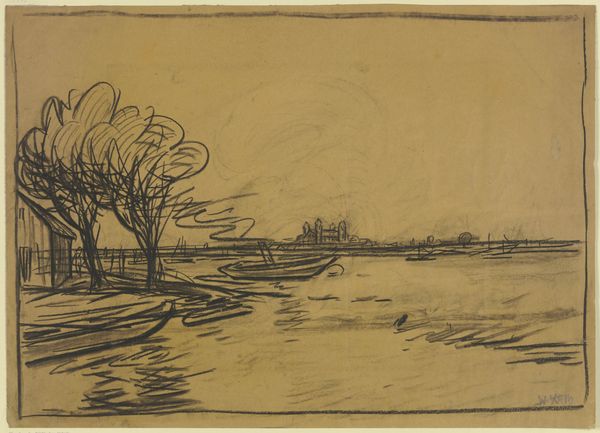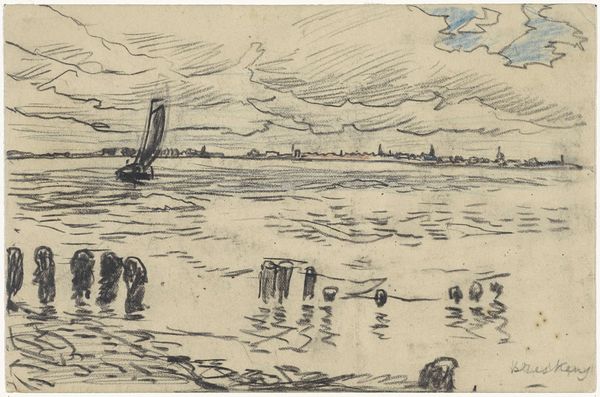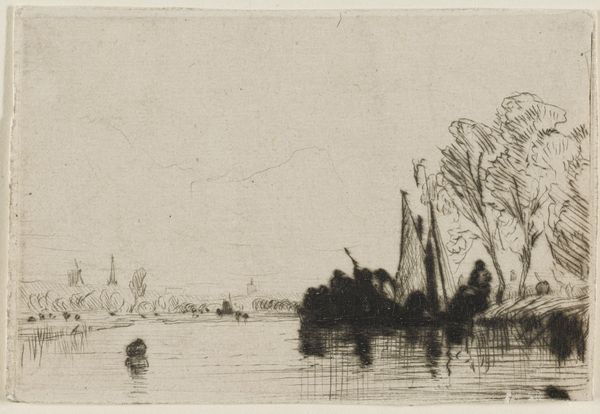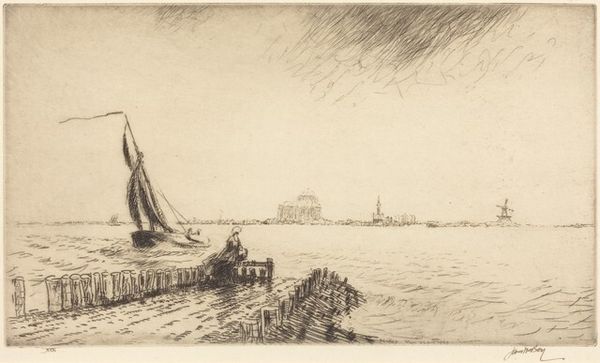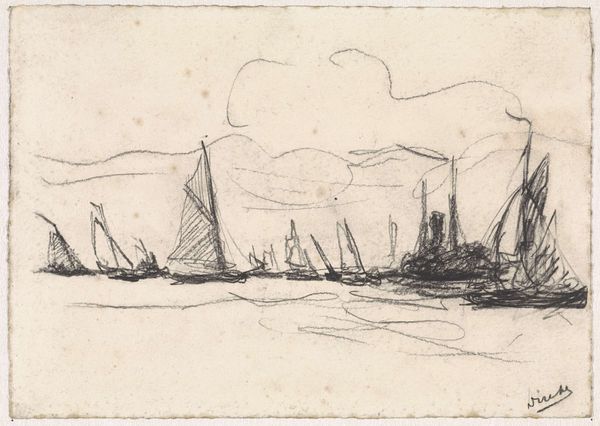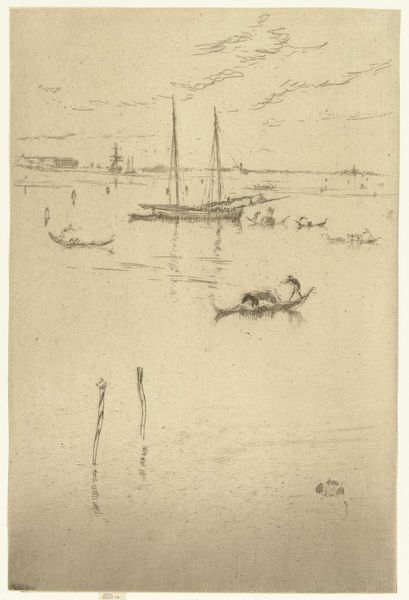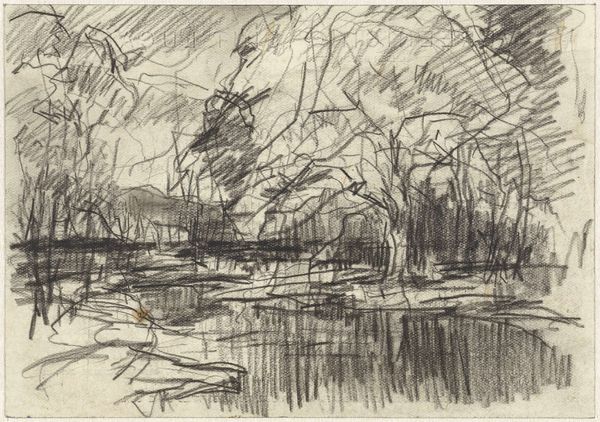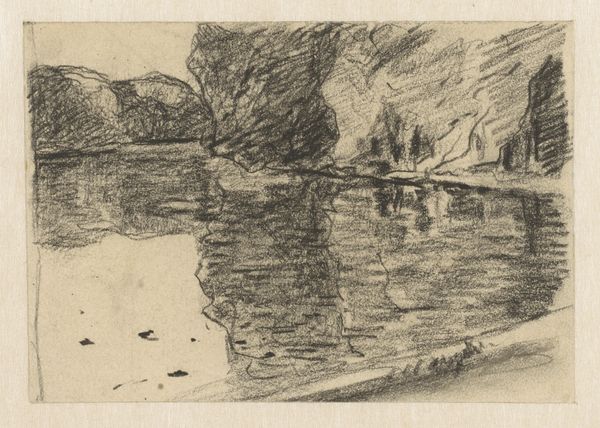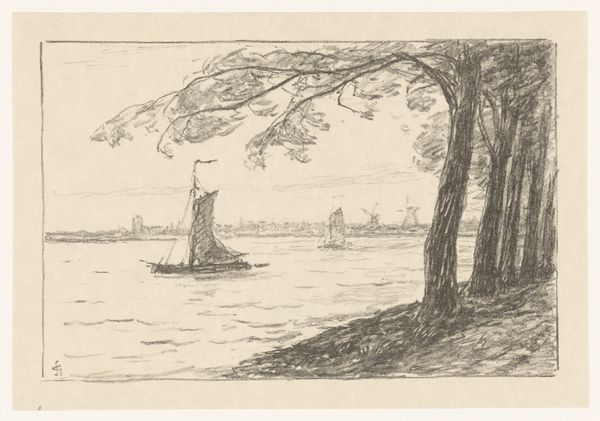
drawing, plein-air, ink
#
architectural sketch
#
drawing
#
amateur sketch
#
quirky sketch
#
impressionism
#
plein-air
#
incomplete sketchy
#
landscape
#
study drawing
#
ink
#
sketchwork
#
detailed observational sketch
#
quick sketch
#
fantasy sketch
#
initial sketch
Dimensions: height 249 mm, width 148 mm
Copyright: Rijks Museum: Open Domain
Curator: Right, let’s take a moment with this pen drawing by Théophile de Bock, titled "Oever met boerenschuur en zeilschepen," which roughly translates to "Shore with farm barn and sailing ships." It's believed to have been created sometime between 1861 and 1904. Editor: Well, instantly, I’m drawn in by the contrast! It feels like a quicksilver memory, all soft light and sharp darks… like a fleeting summer moment caught in a bottle. Curator: Absolutely. Consider how de Bock situates this rural landscape within a period of intense industrialization and urbanization in the Netherlands. These scenes allowed for a collective reflection of the changing rural identities. It presents us with questions about the relationship between nature, labor, and leisure during this period of societal transformation. Editor: I get a strong sense of immediacy, like he was sketching right there, hearing the water lap against the boats. See how the clouds are barely hinted at, like wisps of dreams? It is simple and honest. The shadows on the water seem to be having a party of their own. Curator: The choice of a humble subject like a barn becomes significant when positioned against the backdrop of the period. De Bock here almost elevates a common scene to speak volumes about how value is perceived and assigned to different sectors of society. Who gets to be seen? Who remains on the periphery? Editor: It's funny how the sparseness creates this illusion of wide-open space, right? He’s economical with detail. I can almost smell the reeds and feel the wind in my face. It reminds me of afternoons spent daydreaming by the lake. Curator: These intimate landscapes were integral to shaping Dutch national identity, reinforcing an emotional connection to their land and its rural population during an era of societal shifts. By the presence of agricultural tools or activities, one begins to ask: what were the conditions of those working the land? Editor: You've certainly given me some fascinating food for thought about how something so serene can speak to so many layers of history. Thanks! Curator: It highlights art's ability to capture not only a place but a moment of societal negotiation.
Comments
No comments
Be the first to comment and join the conversation on the ultimate creative platform.
